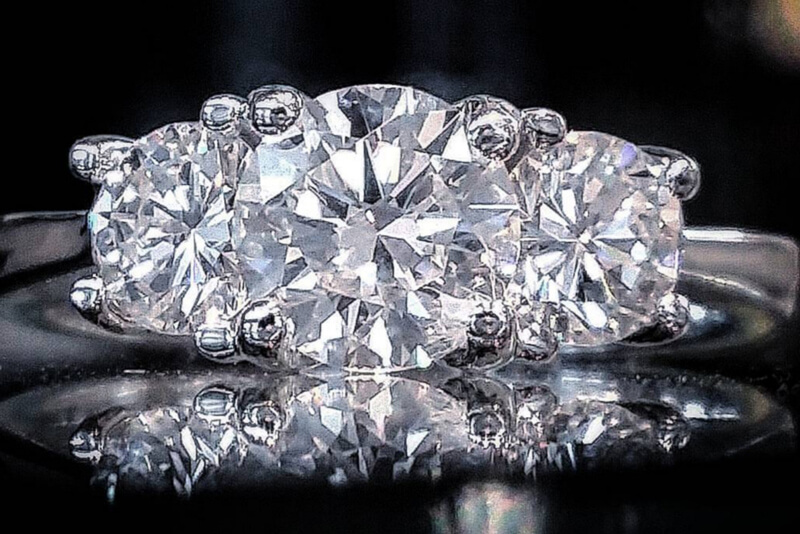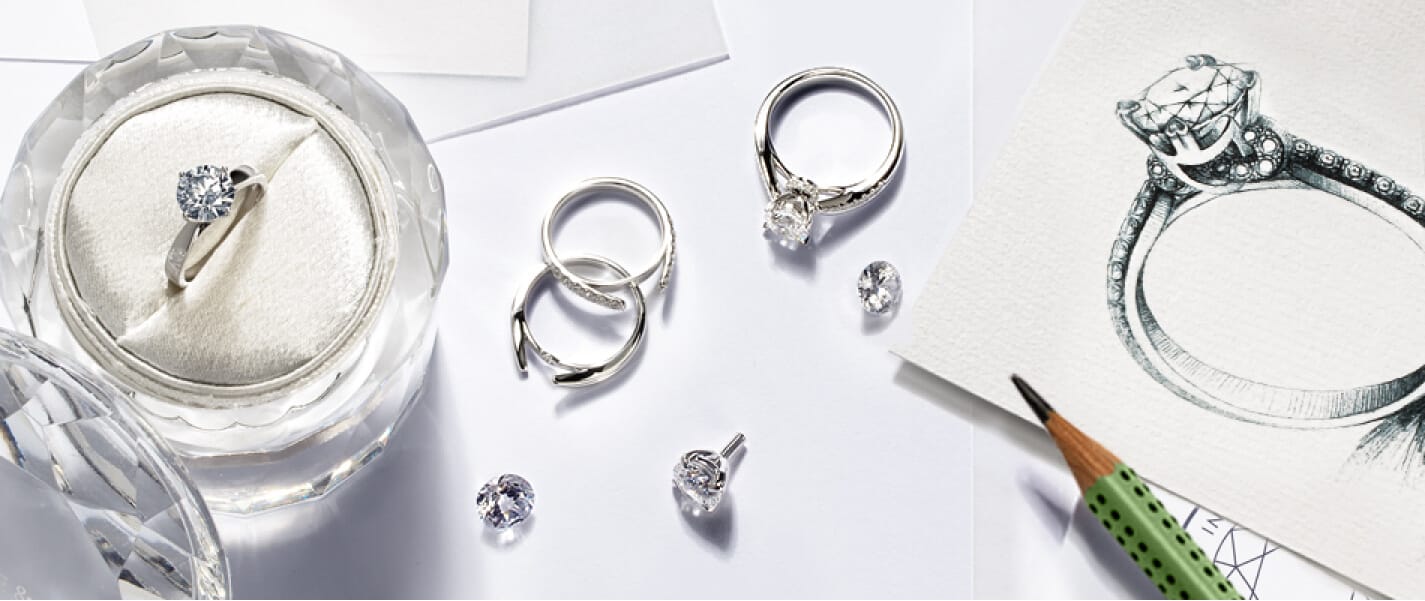Diamonds are not just a girl’s best friend; they are a testament to elegance, beauty, and eternal love. One of the key elements that define a diamond’s allure is its shape. From classic round brilliants to intricate pear cuts, each shape holds a unique charm and appeal. In this comprehensive guide, we delve into the world of diamond shapes, helping you navigate through the plethora of options to find the perfect one for your needs.
Introduction to Diamond Shapes
Diamond shapes go beyond mere geometry; they influence how light interacts with the stone, dictating its brilliance and sparkle. Understanding these shapes is crucial when choosing a diamond that resonates with your style and preferences.
What Defines a Diamond Shape?
The term “diamond shape” refers to the geometric form into which a rough diamond is cut and polished. It is distinct from the diamond cut, which refers to the quality of the diamond’s facets and proportions.
Importance of Choosing the Right Shape
Selecting the right diamond shape is akin to finding the perfect frame for a masterpiece—it enhances the stone’s inherent beauty and ensures it complements its wearer’s style and personality.
Popular Diamond Shapes
When shopping for diamonds, diamond shapes guide, you’ll encounter a variety of shapes, each with its own characteristics and allure.
Round Brilliant Cut
The round brilliant cut is renowned for its unparalleled sparkle and timeless appeal. It maximizes light return through its 58 precisely placed facets, making it the most popular choice for engagement rings.
Princess Cut
The princess cut features a square or rectangular shape with pointed corners. It combines the brilliance of a round diamond with a modern, angular silhouette, making it a favorite for contemporary engagement rings.
Emerald Cut
Known for its elegant rectangular shape and step-cut facets, the emerald cut emphasizes clarity over brilliance. It exudes sophistication and is often chosen for its understated glamour.
Asscher Cut
Similar to the emerald cut but square in shape, the asscher cut features cropped corners and a mesmerizing hall-of-mirrors effect. It appeals to those seeking a vintage-inspired look with a modern twist.
Radiant Cut
The radiant cut combines the brilliance of a round diamond with the sleek lines of an emerald cut. Its faceting pattern allows for exceptional sparkle, making it ideal for those who desire a dazzling, eye-catching stone.
Pear Cut
Resembling a teardrop, the pear cut features a rounded end tapering to a point. It is favored for its unique shape and ability to create the illusion of longer, slender fingers when worn as a ring.
Oval Cut
The oval cut is a modified brilliant-cut that elongates the finger due to its elliptical shape. It offers a vintage yet contemporary look and is prized for its brilliance and fire.
Marquise Cut
The marquise cut boasts a distinctive boat-like shape with pointed ends. It maximizes carat weight, appearing larger than other shapes of the same carat size. It is a favorite for those who seek a dramatic, elongated look.
Cushion Cut
The cushion cut features rounded corners and larger facets to enhance brilliance and clarity. It has a romantic appeal and suits both classic and vintage-inspired settings.
Heart Cut
Symbolizing love and romance, the heart cut is a unique choice for sentimental jewelry pieces. It requires excellent craftsmanship to achieve its distinctive shape and proportions.
Factors to Consider When Choosing a Diamond Shape
Choosing the right diamond shape involves considering several factors beyond personal preference.
Face Shape and Diamond Shape Compatibility
Different diamond shapes complement various face shapes. For example, elongated shapes like oval or pear cuts can flatter round faces, while round or princess cuts can balance angular faces.
Style Preferences
Your personal style influences your choice of diamond shape. Classic shapes like round or princess cuts suit traditional tastes, while fancy shapes like marquise or heart cuts appeal to those seeking something unconventional.
Brilliance and Sparkle
Each diamond shape interacts with light differently, affecting its brilliance and sparkle. Round diamonds are known for their exceptional sparkle, while step-cut shapes like emerald cuts prioritize clarity and elegance.
Diamond Shape and Engagement Rings
Engagement rings often feature specific diamond shapes that symbolize love and commitment.
Most Popular Shapes for Engagement Rings
The round brilliant cut dominates the engagement ring market due to its timeless appeal and maximum sparkle. Princess cuts and cushion cuts also rank high for their contemporary yet romantic allure.
Unique Shapes for Non-Traditional Rings
For those seeking unique engagement rings, unconventional shapes like pear, marquise, or heart cuts offer a distinctive alternative to traditional round diamonds.
Diamond Shape and Value
The shape of a diamond can significantly impact its value and pricing.
How Shape Affects Diamond Pricing
Round diamonds typically command higher prices due to their popularity and superior light performance. Fancy shapes like marquise or heart cuts may offer better value for those seeking larger-looking stones without the premium of a round diamond.
Investing in Different Diamond Shapes
Investing in diamonds involves understanding market trends and consumer preferences for different shapes. While round diamonds hold enduring value, unique shapes can appreciate based on changing fashion trends.
Pros and Cons of Different Diamond Shapes
Each diamond shape comes with its own set of advantages and considerations.
Round vs. Princess Cut
Round diamonds offer maximum brilliance but may be more expensive. Princess cuts provide a modern look with excellent sparkle but are prone to chipping at the corners.
Cushion vs. Emerald Cut
Cushion cuts excel in brilliance and softness, lab diamonds, ideal for romantic settings. Emerald cuts prioritize clarity and elegance but may show more imperfections due to their step-cut facets.
Unique Advantages of Each Shape
From elongated elegance to angular brilliance, each diamond shape offers unique advantages depending on personal preference and style.
Choosing the Right Diamond Shape for Different Settings
The setting of your diamond can enhance its shape and overall appearance.
Solitaire Settings
Solitaire settings highlight the diamond’s shape and cut with minimal distraction. They are ideal for showcasing classic shapes like round or princess cuts.
Halo Settings
Halo settings surround the center diamond with smaller stones, adding brilliance and creating a larger overall appearance. They complement various diamond shapes, enhancing their sparkle and presence.
Three-Stone Settings
Three-stone settings feature a center diamond flanked by two smaller stones. They accommodate different shapes and offer versatility in design, symbolizing past, present, and future love.
Customizing Diamond Shapes
Advancements in technology allow for custom diamond cuts and designs.
Custom Cuts and Designs
Custom diamond shapes cater to individual preferences, creating bespoke jewelry pieces that reflect personal style and taste.
Designing with Unconventional Shapes
Jewelers can craft unique designs using non-traditional shapes, offering endless possibilities for creative expression and personalized jewelry.
Caring for Different Diamond Shapes
Proper care and maintenance preserve the beauty and integrity of your diamond over time.
Cleaning and Maintenance Tips
Regular cleaning with a soft brush and mild detergent keeps diamonds sparkling. Avoiding harsh chemicals and storing diamonds separately prevent damage and scratches.



